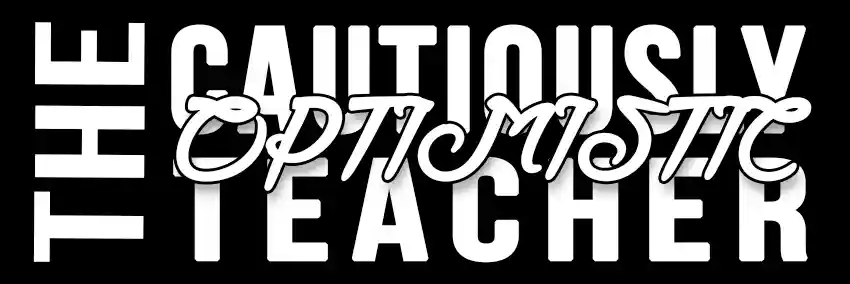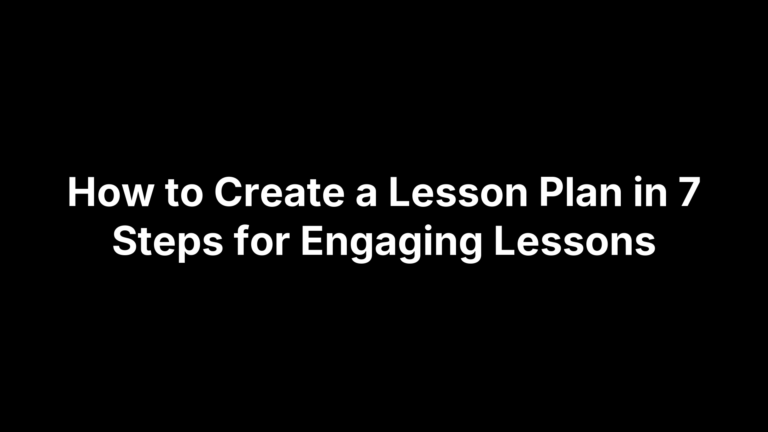Universal Design for Learning: What It Is and How to Use It
Universal Design for Learning (UDL) is a teaching framework that helps you design lessons to meet the needs of all your students from the start. Instead of creating a one size fits all lesson and then modifying it later, UDL asks you to plan with flexibility built in. Think of it like designing a building with ramps and automatic doors instead of adding them afterward. You anticipate diversity in your classroom and create multiple ways for students to access content, engage with material, and show their learning.
This article breaks down what UDL means for your classroom. You’ll learn why it matters, how to apply it in your lesson planning, and what the core principles look like in action. We’ll walk through practical examples you can use tomorrow and share resources that make implementation easier. Whether you’re new to UDL or looking to deepen your practice, you’ll find concrete strategies to support every learner.
Why universal design for learning matters
Your classroom includes students with different learning styles, abilities, backgrounds, and needs. Traditional lesson planning assumes all students learn the same way, which creates barriers for many learners. When you design lessons for an imaginary "average" student, you force yourself to constantly modify and retrofit your materials after the fact. This reactive approach wastes your time and often leaves students struggling while you scramble to adjust.
Universal design for learning matters because it prevents these barriers before they appear. You design flexibility into your lessons from day one, creating multiple pathways for students to access information, engage with content, and demonstrate their understanding. Students who struggle with reading can access audio versions. Visual learners get diagrams and graphics alongside text. Kinesthetic learners engage through hands-on activities. Everyone benefits when you build options into your original plan.
"When a flower doesn’t bloom, you fix the environment in which it grows, not the flower."
Research shows that UDL benefits all students, not just those with identified disabilities. Students become more engaged and take greater ownership of their learning when they can choose how they learn best. You spend less time creating last-minute accommodations and more time teaching. Your planning becomes more efficient because you anticipate needs upfront rather than reacting to problems as they surface.
How to use universal design for learning
You apply universal design for learning by planning flexibility into your lessons before you teach them. Start by identifying what you want students to learn, then design multiple pathways for students to reach that goal. This shift in thinking transforms how you approach lesson planning because you anticipate diversity instead of reacting to it.
Start with your learning goals
Define what students need to know or do by the end of your lesson. Write clear, measurable objectives that focus on the essential learning, not on how students will get there. For example, instead of "students will read Chapter 3 and answer questions," write "students will analyze character motivation using textual evidence." This separates the learning goal from the method, which gives you room to design multiple ways students can demonstrate their understanding.
Anticipate barriers before you plan
Think through who might struggle with your lesson as currently designed. Ask yourself what might block different learners from accessing content, staying engaged, or showing their knowledge. Does your lesson rely heavily on reading? Some students will need audio options. Does it require fine motor skills? You’ll need alternatives for students who struggle with handwriting. Identifying barriers upfront lets you build solutions into your original design rather than creating modifications later.
Build in multiple options
Create at least two or three ways for students to access information, engage with content, and express their learning. Provide text alongside visuals, audio, and hands-on materials. Let students choose between writing an essay, creating a presentation, or having a discussion to show their understanding. These options benefit everyone, not just students with documented needs.
"You design curriculum and instruction to meet the diverse needs of all students in the classroom, not retrofit after the fact."
Universal design for learning becomes easier with practice as you build a toolkit of flexible strategies.
Key principles and guidelines
Universal design for learning rests on three core principles that correspond to how your brain processes information. These principles guide you in creating lessons that address different learning networks, ensuring every student can access content, engage with it meaningfully, and express their understanding. You don’t need to master all three at once, but understanding them helps you identify where your lessons might create barriers.
Engagement: The why of learning
Engagement focuses on motivation and sustaining student interest in learning tasks. This principle addresses the affective network of the brain, which determines what captures attention and why students choose to participate. You increase engagement by offering choices in topics, authentic tasks that connect to real life, and opportunities for collaboration. Students stay motivated when they see relevance in what they’re learning and feel some control over their learning path.
"The affective network is associated with engagement, the ‘why’ of learning."
Representation: The what of learning
Representation means presenting information through multiple formats so all students can perceive and understand content. This principle addresses the recognition network, which processes and interprets information. You apply this by providing text alongside audio, adding visuals to supplement verbal explanations, and offering hands-on materials when appropriate. Different students process information differently, so multiple representations ensure everyone can access the same content.
Action and expression: The how of learning
Action and expression gives students multiple ways to demonstrate their knowledge. This principle addresses the strategic network, which plans and executes tasks. You implement this by letting students choose how they’ll show their learning, whether through writing, speaking, creating visual projects, or building something tangible. Flexibility in expression means students can showcase their understanding without barriers created by format requirements.
Practical classroom examples
Universal design for learning looks different across subjects and grade levels, but the core idea stays the same. You build flexibility into your original lesson design instead of creating modifications afterward. These examples show what that looks like in actual classroom situations, giving you concrete starting points you can adapt for your own teaching context.
Reading a novel with multiple access points
You assign a novel study but provide the text in multiple formats from day one. Students can read the physical book, listen to an audiobook, or follow along with both at once. For discussion and analysis, you offer choice in how students respond: they can write traditional responses, create visual character maps, record audio reflections, or participate in small group discussions. All students analyze the same text and meet the same learning objectives, but they choose the pathway that works best for them.
Teaching mathematical concepts through varied representations
You introduce fractions by presenting the concept through multiple representations simultaneously. Students see the numerical notation, manipulate physical fraction tiles, view visual pie charts, and connect fractions to real life scenarios like cooking measurements. During practice, students choose whether to work with concrete manipulatives, visual models, or abstract numbers. This approach lets students access the concept through their strongest learning pathway while building connections across different representations.
"You don’t change your learning goals, just the pathways students take to reach them."
Science lab with flexible participation options
Your science experiment includes written procedures, video demonstrations, and oral explanations of the steps. Students can work individually, with partners, or in small groups based on their preference. For the lab report, you accept traditional written reports, labeled diagrams with explanations, video presentations, or recorded oral summaries. Every option requires the same scientific thinking and analysis.
Tools and resources for teachers
You don’t need to create universal design for learning materials from scratch. CAST, the organization that developed the UDL framework, offers free guidelines at their website that break down each principle with specific checkpoints and examples. These guidelines serve as your planning reference whenever you design lessons, helping you identify where to build flexibility into instruction.
Digital tools that support UDL
Your existing technology likely already supports UDL implementation. Google Docs includes text-to-speech and voice typing features that provide representation options. Microsoft Word offers similar accessibility tools built into the platform. Video platforms like YouTube provide automatic captions, which you can edit for accuracy.
"Start with the tools you already have before investing in new technology."
These everyday tools give you multiple representation options without requiring specialized software or additional budget.
Finding practical strategies
Teacher communities and professional organizations share UDL strategies you can implement immediately. Your school or district may offer training sessions or coaching support that connects UDL principles to your specific teaching context. Many state education departments provide free online courses that walk you through applying universal design for learning to your grade level or subject. Starting with one principle and gradually expanding your practice makes implementation manageable rather than overwhelming.
Final thoughts
Universal design for learning transforms how you approach lesson planning by building flexibility into your instruction from the start. You create lessons that anticipate student diversity rather than react to it, which saves time and serves all learners more effectively. Start small by applying one principle to your next lesson, then gradually expand your practice as you become more comfortable with the framework.
Your classroom already contains the diversity that makes universal design for learning necessary. Students come with different strengths, challenges, backgrounds, and learning preferences. Traditional one size fits all instruction creates barriers for many of these learners, forcing you into constant modification mode. Designing with flexibility built in eliminates most of these barriers before they appear.
For more practical teaching strategies and resources that support your classroom, explore The Cautiously Optimistic Teacher. You’ll find lesson plans, tools, and approaches that help you reach every student effectively.







